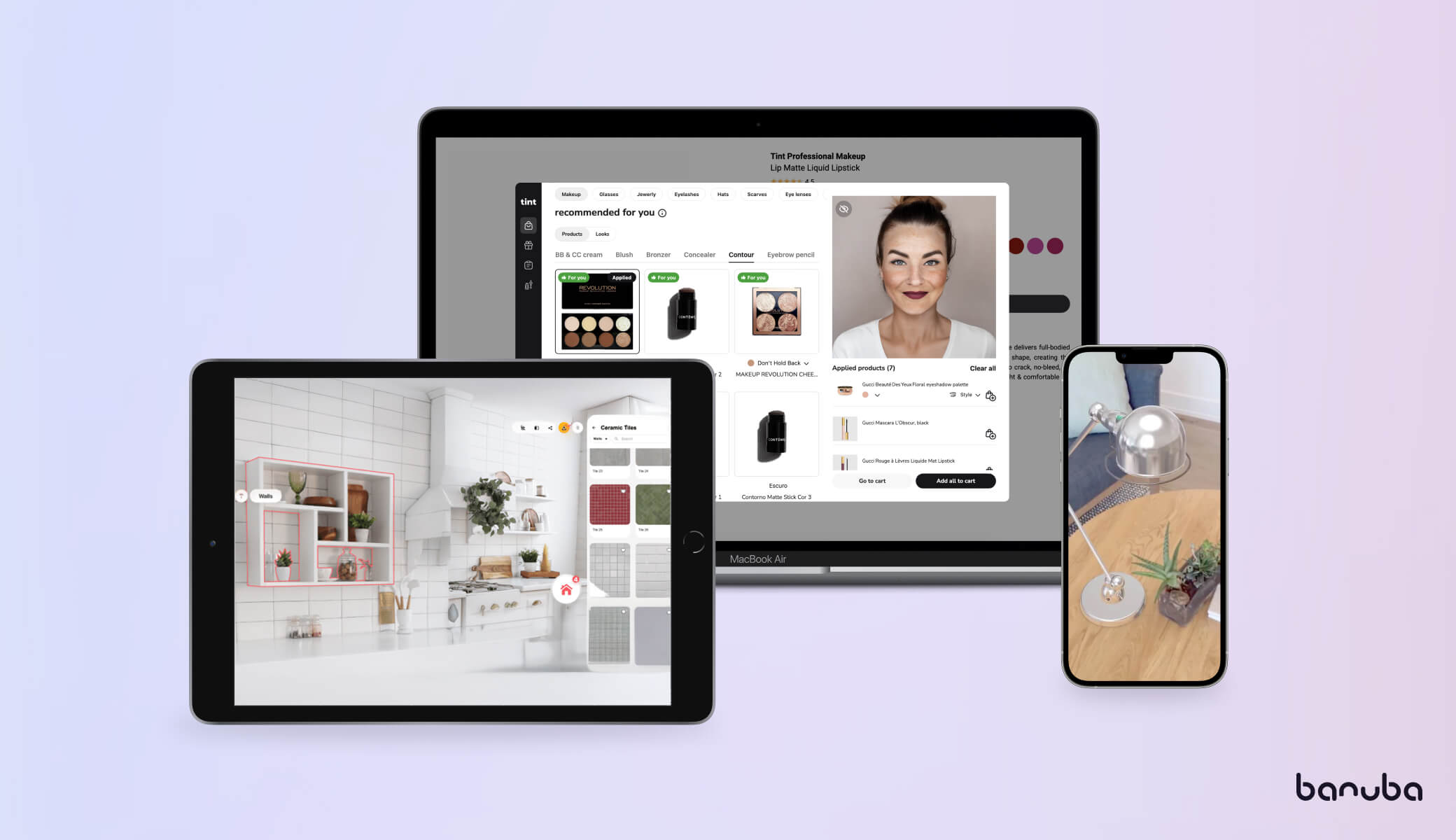4 Biggest Dental Industry Trends Of 2024
One of the most expensive and yet demanded healthcare niches, dentistry has seen a rapid evolution and is keeping up with the advances in technology. While only 20 years ago a visit to the dentist was a tough experience for anybody, the people of today queue up to dental aestheticians and are willing to pay over the top for a rework of their smile. And this is not the end: the industry keeps growing and incorporating new technologies to ensure a personalized and comfortable patient experience. Continue reading to learn about four biggest trends in dentistry and see how they can benefit your own practice in 2024.


[navigation]
TL;DR
- Besides being part of the healthcare system, dental care is also a service, one of significant cost, and consequently, one that is expected to be of quality.
- Solo dental practices are declining in favor of all-in-one clinics that offer comprehensive services under one roof.
- AI and AR are revolutionizing dental care, enabling precise diagnoses, personalized treatment plans, and improved patient communication.
- Teledentistry is making dental care more accessible, especially for those in remote areas. We are about to witness a new rise of it in primary assessments and consults.
- Reducing patients’ anxiety is key for their trust and loyalty. Personalized care and strong patient-dentist relationships are crucial for a supportive and fear-free dental experience.
What’s Going On In The Dental Industry In 2024?
The short answer to this question is “a lot”. During the COVID-19 pandemic dental care spending took a deep dive, but in 2021 already the number went back up by 11% in the US, as well as in the rest of the world. Besides, the global oral care market is projected to grow by 3.14% from 2024 to 2028, resulting in a market volume of $60.14 billion by 2028. This reflects the increasing awareness and demand for oral care products and services worldwide.
All dental procedures performed by professionals can be roughly divided into healthcare, and cosmetic dentistry which deals with teeth whitening, alignment, and overall smile aesthetics. And this smile treatment is a big deal – the global cosmetic dentistry market size is anticipated to grow at a compound annual growth rate (CAGR) of 13.5% from 2023 to 2030. This means that aesthetic dentistry is only going to become a more attractive service for customers to pursue and, quite logically, for businesses to provide.
Biggest Dental Trends Of 2024
So, with the global average spending on teeth care being $200 per capita yearly, it is only logical for patients to expect a quality service. Today’s dental care customers are seeking a more personalized approach, maximum convenience and comfort. Here are the four trends already observed in the industry that you may be interested in too.
All-In-One-Place Approach
Solo dental practices and private offices are seeing a decline. The American Dental Association states that while back in the 90s 2 out of 3 dentist offices were solo practices, today that rate only equals one in two. One of the reasons for this may lie in the cost of rent for a dental practice: it is much more economically viable to host two or more doctors under one roof, sharing the space required for a reception desk, waiting room, etc. With one of these for, say, three dentist’s offices, a clinic of this format would spend less on rent than three solo practices all together.
Another reason is the clients’ experience and comfort. The spectrum of dental care services spans across therapeutic dentistry, surgery, orthodontology, implantation, cosmetic dentistry, hygiene, etc. So for the sake of convenience, a patient is more likely to turn to a clinic that provides any and all services in one place. This approach not only saves patients the hassle of visiting multiple specialists at different locations, but also ensures a cohesive and streamlined treatment plan.
In addition, modern dental clinics are increasingly integrating cutting-edge technology to enhance the patient experience. Innovations such as 3D printing for custom prosthetics or teledentistry services allow for quicker diagnoses and more precise treatments.
AR and Generative AI For Everyone
We have seen the vast potential of generative AI and AI in general over the last year. With artificial intelligence tools making more and more success in various fields, dental care professionals are working on ways to implement neural networks and AR tools into dentistry practices.
Augmented reality software allows dentists to visualize a patient's mouth in 3D in order to provide more accurate diagnoses and treatment plans. Then generative AI assists in creating personalized dental care solutions. By analyzing large datasets of images and patient histories, it can generate custom treatment plans and predict the outcomes of various procedures. This leads to more precise and tailored care.
The use cases are limitless. For one, augmented reality software can overlay an image of veneers on a patient’s teeth during a consultation, helping both the dentist and the patient understand the proposed procedures better. AI can design custom aligners for orthodontic treatments or simulate the results of cosmetic procedures, while AR tools like teeth whitening filters from Banuba’s Face AR apply the prognosis onto the patient’s photo, giving them a clear preview of their future smile. This interactive approach improves patient communication and, even more importantly, trust. Dentistry is a costly service, after all, and patients are in their full right to expect a quality service and a personalized approach.
AR And Teledentistry
Teledentistry, much like telemedicine, had a burst of popularity back in the pandemic years. And now, as the field of healthcare is witnessing a transformative shift towards digital solutions, dental care is no exception. Not only can such solutions provide a substitute for in-person care and pre-treatment assessments, but it can also help make dental care more accessible. Digital dental treatments can make it easier for people who live in rural locations without easy access to medical services to obtain the early-stage care they need. Additionally, teledentistry has been shown to be equally effective as in-person initial consultations at diagnosing cavities and assessing treatment plans.
AR also enables dentists to guide patients through self-examinations, highlighting areas of concern on a live video feed. This interactive approach not only makes remote consultations more effective, but also builds patient confidence in the proposed treatments. By integrating AR into teledentistry, dental practices can offer a more comprehensive and engaging virtual care experience, ensuring that patients receive high-quality advice and visualization tools from the comfort of their homes.
One notable application is AR teeth whitening filters, like the ones in Banuba’s Face AR SDK. Based on the VITA shade chart, they allow dentists to show patients potential results from whitening treatments in real-time during both virtual and in-person appointments. This visual aid helps patients understand the benefits and set realistic expectations. AR filters are a budget-friendly tool that can give your patient relations a visible boost. Our VITA-standardized teeth whitening filters are coming soon in May 2024. Try Banuba’s Face AR to see how it can benefit your dental practice.
Battling Patient Anxiety And Fear
It is reported that 36% of the population experience dental anxiety. Moreover, 22% of patients delay or cancel their dental appointments due to fear of the procedures, compromising their dental health. This widespread issue has prompted dental care specialists to start paying more attention to patient comfort and adopt solutions aimed at reducing fear and stress during dental appointments.
One way to do it is by introducing technologies like 3D imaging and digital impressions that help reduce discomfort and shorten recovery times, making dental visits less daunting. Another approach is to eliminate the fear of noisy machinery and disturbing views. Some clinics offer their patients to wear VR glasses during treatment, immersing them into a fictional world so that they don’t need to see the intimidating tools hovering over their open mouth.
In children’s dental practices, young patients are treated to games and entertaining activities of all sorts, like painting nails or watching their favorite shows. Adult clients, on the other hand, feel more at ease and in control of the situation when they are presented with a modeled treatment situation. For example, a 3D overview of the patient’s teeth, together with an AR overlay of their new dental implant, can help them better understand what will be going on during the procedure. When each of the seemingly torturous actions make sense, the treatment suddenly feels safer, allowing patients to relax and just wait.
Building strong patient-dentist relationships and personalizing care are also key strategies. Dentists who take the time to understand individual fears can tailor their approach, creating a more supportive environment. Educational initiatives that inform patients about procedures and what to expect can demystify the dental experience, helping patients feel more in control.
Conclusion
In 2024, the dental industry is all about prioritizing patient comfort, convenience, and personalized care. From all-in-one dental clinics to the integration of advanced technologies like AR and AI, everything is aimed at turning a dental professional’s office into a safe space with engaging and easy-to-follow procedures instead of disturbing and painful treatment. Augmented reality in particular plays an important role in helping patients visualize their results, enhancing trust and satisfaction. Try AR teeth whitening filters by Banuba for your dental practice to see an increase in your patient relations.



